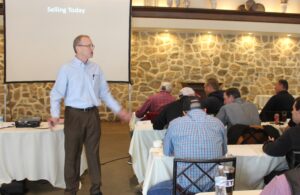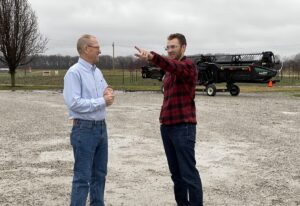From a great new book by Chris Voss, “Never Split the Difference”
Often times, I’m asked to train a sales team in the area of negotiating. Typically, this means negotiating around price resistance or more specifically, how to not drop the price to get the sale. While that is an important skill, I have found negotiating and closing skills, specifically handling objections is accomplished way before the customer is ever at the point of bartering or resisting. Most salespeople ask, “What do I do when the customer can buy it cheaper somewhere else?” My response to that is that you need to be in the objection handling game way before your customer ever hits you with that resistance.
In his book, “Never Split the Difference”, Chris Voss walks you step by step through some of the tensest negotiations in his long career as one of the leading hostage negotiators for the FBI. While he isn’t in sales, he’s definitely doing everything in his power to sell the hostage-takers on a non-violent ending. Chris, then walks you through how these lessons are directly applicable to business negotiations like we run into on the farm or when selling in agribusiness.
I encourage you to find a copy of the book or get the audio version and listen along as you drive. The stories alone are so unbelievably fascinating, it’s worth it just for them. However, I think you’ll find dozens of applicable tips and tactics for helping you negotiate in sales.
Here are three of the best that I found:
#1 Get to “No” quickly: Saying “Yes” is a commitment and can feel risky. Saying “No” gives the customer a feeling of being in control and allows them to drop their defensive guard. Many of us grew up in sales on the concept of “Getting to Yes” and “We don’t take No for an answer”. Chris offers a counter to that strategy. As negotiations had stalled in many of his standoffs, he would arrive and shift the feeling of power to the hostage-taker by allowing them to say no in several areas. Once they felt Chris was accepting this “No” from them, they felt like they were in control. This allowed Chris to negotiate and keep the conversation moving.
#2 Use What and How Questions vs Why: This was a real eye-opener for me as I love to use “Why” questions. Mostly because I love to learn and find it’s easiest to just ask why. Chris explains that when you ask someone, like a customer, “Why do you buy from that company?” You are basically asking the customer to defend their actions. Think about it. If someone asks you why you drive a Chevy or Ford pickup, you immediately go into the defend mode and explain why it’s better than the other brand. However, if you change the “Why” to “What, How or When” style questions, they don’t seem as accusatory. Examples might be, “How long have you driven a Chevy?” “Have you ever driven other brands?” “What was it that drew you to this brand?”, Etc.
Going through Six Sigma training, we were taught the “Why-Why Analysis”, which recommends asking why up to 5 times to uncover the root of any problem, decision or action. While great for internal discovery, this is not the best approach for customers. We definitely want to know why a customer buys from a certain vendor, but we just need to adjust the approach of the question.
#3 Listening skills: The book is loaded with examples of good listening skills. He explains how critical it is to keep them talking. His initial goal is discovery. He puts great effort into uncovering what the problem is and why they took hostages. To do that, he explains, they need to be talking.
How similar is that to a farm call? Your initial steps are discovery, trying to uncover what problems this producer might have. You can’t listen if you’re talking.
Chris goes on to explain that when he is the lead negotiator on the phone, there are an additional 5-10 agents listening in on the call. Once the call ends, they gather together and discuss what they heard. While on the phone, he is busy trying to focus on the hostage-taker and keeping the conversation flowing. He will often miss things that are said and will miss opportunities for follow up questions. These extra sets of ears on the call, help catch the subtle aspects of the negotiation. As a sales coach on thousands of ride-along sessions, I have seen this first hand. The scene of a sale on a farm call is a very busy environment. You have an active conversation that you are working to keep going. In the meantime, you are juggling with paperwork, i-pads, computers, the customer’s paperwork, interruptions from farm employees, family members and even the farm dog is trying to get petted. Add the weather and interrupting phone calls the customer takes and you can easily see how valuable it would be for an extra set of eyes and ears to help with a sales call.
While we can’t have 5-10 people on a sales call, you can bring along a peer, your manager, a tech person, maybe even a coach (I know a good one I can recommend). Immediately after the sales call, pull over and do a debrief of the call. Ask your observer to give you feedback on what they saw and heard. You would be amazed at the number of times when a salesperson misses an opportunity due to the busy-ness of a sales call.
Fortunately, the outcomes of our negotiations aren’t nearly as life-threatening as those of a hostage negotiator. However, they are very important skills for you to learn, practice and develop on your way to growing your territory. Pick up a copy today and start your journey to improve your negotiating skills.
For more information on Ag sales training, coaching or business development, contact Greg Martinelli at Ag Sales Professionals, LLC at (608) 751-6971. Email is Greg@GregMartinelli.net Web site is www.GregMartinelli.net




